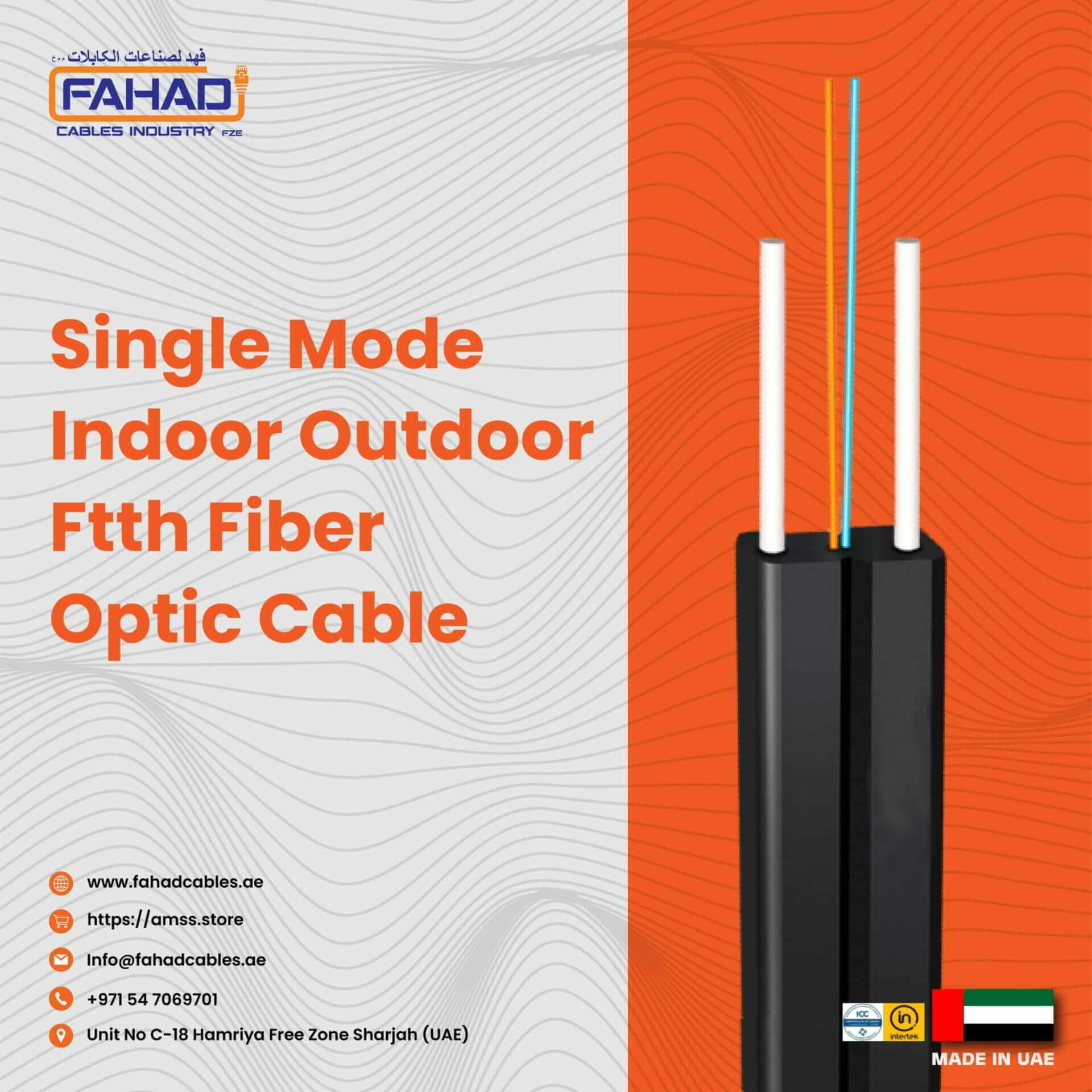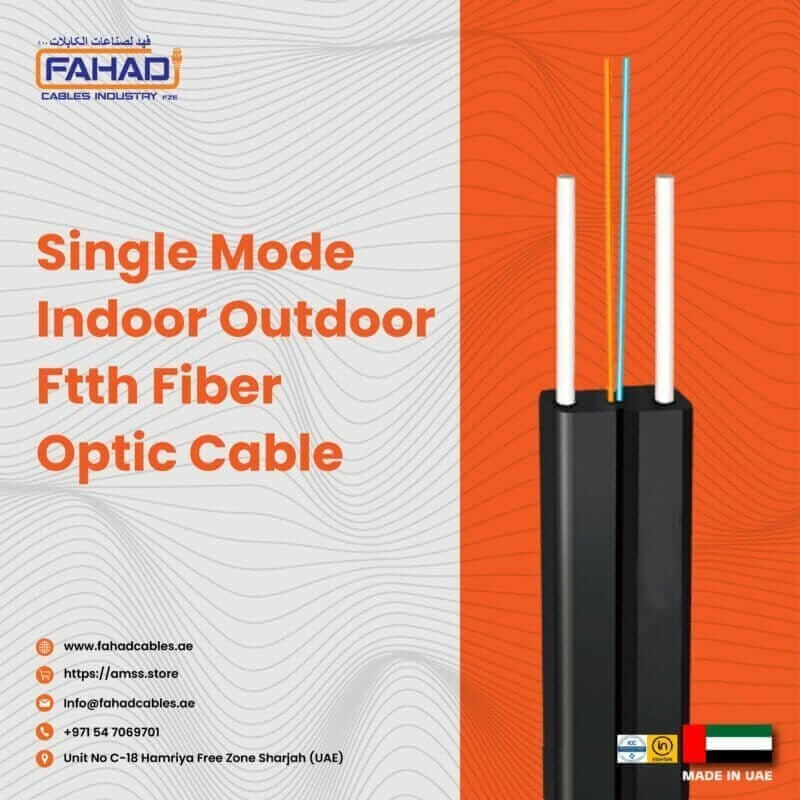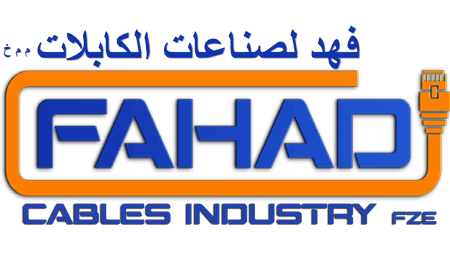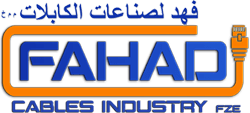Blog
Fiber Optic Cable FTTH: Innovations by Fahad Cables Industry FZE in Sharjah, UAE

Introduction to Fiber Optic Technology
Fiber optic technology has revolutionized the field of telecommunications, offering enhanced speed and reliability compared to traditional copper cables. At its core, fiber optic technology utilizes thin strands of glass or plastic fibers to transmit data as pulses of light. This allows for vast amounts of information to optical fiber cable services in uae be transmitted over long distances without significant loss of quality or signal degradation. The principle underlying fiber optics is known as total internal reflection, which enables light to travel through the fiber even when it is bent at sharp angles.Fiber Optic Cable FTTH



One of the most significant advancements within this domain is FTTH, or Fiber to the Home technology. FTTH represents a paradigm shift in internet connectivity by delivering high-speed internet directly to residences through fiber optic cables. This innovation not only enhances the speed optical fiber cable services in uae of internet services but also improves reliability, making it less prone to interference and disruptions common with conventional methods. As a result, consumers experience smoother streaming, quicker downloads, and a more robust online presence.
ftth company
The growing demand for high-bandwidth applications, such as video conferencing, online gaming, and smart home technologies, has further propelled the adoption of FTTH solutions. As households increasingly rely on internet connectivity for daily activities and work from home arrangements, the necessity for a fast, consistent connection has never been more essential. In the rapidly evolving digital landscape, fiber optic cables are becoming the preferred choice for internet service providers aiming to meet consumer expectations for speed and reliability. ftth companies,ffth cables, ffth cable,optical fiber cables for seamless connectivity,fiber optic cable manufacturers in uae, fiber to the home (ftth) technology uses both coaxial cable and optical fiber to configure home access networks. true or false?,seamless fiber innovations,ftth company
Fahad Cables Industry FZE, located in Sharjah, UAE, stands at the forefront of these innovations, actively contributing to the expansion of fiber optic infrastructure. The company’s commitment to providing quality FTTH solutions highlights the critical role that fiber optic technology plays in modern telecommunications and its ongoing impact on connectivity around the globe.fiber optic companies in dubai
Overview of Fahad Cables Industry FZE
Founded in Sharjah, United Arab Emirates, Fahad Cables Industry FZE has established itself as a key player in the telecommunications sector, specifically in the manufacturing of fiber optic cables. With a commitment to quality and innovation, the company has developed a wide range of products to meet the ever-increasing demands for high-speed internet connectivity. Over the years, Fahad Cables has gained recognition for its focus on the FTTH (Fiber to the Home) solutions, which have proven essential in supporting the rapid growth of digital services across the region.
The mission of Fahad Cables Industry FZE is to deliver superior telecommunications solutions that enhance connectivity and empower communities. By prioritizing research and development, the company continually seeks to innovate and integrate the latest technologies in its manufacturing processes. This approach not only ensures high-quality products but also contributes to the overall advancement of the telecommunications infrastructure in the UAE.
fiber optic
Fahad Cables Industry FZE’s significance within the UAE’s telecommunications landscape can be attributed to its ability to provide reliable fiber optic cable solutions that facilitate seamless communication. As the country shifts towards an increasingly digital economy, the role of fiber optic technology becomes more pronounced. optical fiber solutions service uae The company’s dedication to excellence has positioned it as a trusted partner for various telecom operators, ensuring that they can offer robust and stable services to their customers.
In addition to its technological advantages, Fahad Cables is committed to environmental sustainability. By adopting eco-friendly manufacturing practices, the company aims to minimize its ecological footprint while contributing effectively to the growth of the telecommunications industry. Overall, Fahad Cables Industry FZE stands out as a pillar of innovation and reliability in the UAE’s fiber optic sector, continually striving to elevate connectivity standards for the future. glass optical fibers larger core single mode fibers refractive index longer distances optical transmission
The Manufacturing Process of Fiber Optic Cables
The manufacturing process of fiber optic cables, especially at Fahad Cables Industry FZE in Sharjah, UAE, involves several critical stages to ensure high-quality end products. The journey begins with the selection of raw materials, primarily silica glass, chosen for its excellent light transmission properties. This is essential, fiber optic cabling solutions in dubai as the fiber optic cable network quality of the raw materials directly impacts the performance of the fiber optic cables. Once the silica is sourced, the manufacturing process moves to the drawing phase, where it is heated to extreme temperatures and drawn into thin glass fibers.
After the fibers are formed, they must be coated with protective materials. This coating serves to safeguard the delicate glass fibers and enhance their performance. The selection of these protective materials is vital; they need to be durable yet flexible, allowing for installation in various environments. The innovation at Fahad Cables lies in the use of advanced polymer technologies, which not only provide strength but also reduce signal loss, a critical parameter for fiber optic performance.
Once the fibers are coated, they are assembled into cable structures. This assembly process can vary depending on the specific type of fiber optic cable being produced. At Fahad Cables, there is a focus on adhering to international standards, which includes meticulous quality control measures at every stage of production. Testing is performed to ensure ftth wire that the cables meet industry specifications for performance and durability. Notably, advanced technology is employed in inspection processes, utilizing automated systems that meticulously check for any defects in the fiber optic cables. This ensures that only the highest quality products reach the end user, thereby maintaining the company’s reputation in the industry.
Advantages of FTTH Fiber Optic Cables
Fiber-to-the-home (FTTH) technology offers a multitude of advantages that significantly enhance internet connectivity for both consumers and businesses. One of the most notable benefits is the higher speeds associated with fiber optic cables. FTTH can deliver internet speeds exceeding 1 Gbps, far surpassing traditional copper wiring, which often ftth working principle fiber cables uae struggles to keep up with the growing demand for bandwidth. This makes FTTH an optimal choice for activities such as streaming high-definition videos, online gaming, and video conferencing, where speed and stability are crucial.fiber cable network
Another advantage of FTTH fiber optic cables is their improved reliability. Unlike copper cables, which are susceptible to electromagnetic interference and signal degradation over distance, fiber optic cables maintain consistent performance even over long distances. This enhanced reliability translates into less downtime and fewer service interruptions, providing a more stable internet experience. For businesses, this reliability is essential, as it ensures uninterrupted access to critical online services and applications.
Moreover, FTTH offers greater bandwidth capacity compared to traditional wiring systems. Fiber optic cables utilize light to transmit data, allowing them to carry significantly larger amounts of information fiber optic cable networking services simultaneously. This increased capacity supports the growing number of devices connected to home or office networks, accommodating the demands of smart homes and businesses alike. As digital consumption continues to rise, the ability to support multiple users without compromising speed is a vital consideration.
Additionally, FTTH fiber optic technology is often viewed as future-proof. As internet technology evolves and user demands increase, the scalability of optical fiber systems ensures that users can upgrade their speeds and services without the need for extensive physical infrastructure changes. This attribute positions FTTH as a long-term solution, providing significant advantages for consumers and businesses looking to invest in reliable, high-speed internet connectivity.
Applications of FTTH in Modern Telecommunications
Fiber to the Home (FTTH) technology has revolutionized telecommunications by providing high-speed internet access directly to residences and businesses. This innovative approach utilizes ftth cable advanced fiber optic cables that enhance data transmission capabilities significantly. As a direct result, both residential and commercial sectors can experience unmatched internet speeds, improving overall user experience.
In residential applications, FTTH has become essential for enabling seamless internet connectivity. It supports various online activities ranging from browsing and online gaming to more bandwidth-intensive tasks like 4K video streaming. With the increasing popularity of streaming services like Netflix and Hulu, households demand robust internet connections. FTTH satisfies this need by delivering high download and upload speeds that traditional copper lines cannot match, making it indispensable for modern living.
Moreover, FTTH plays a critical role in the implementation of smart home technologies. Devices that require constant internet connectivity, such as smart thermostats, security cameras, and voice-activated assistants, benefit greatly from the reliability and speed that FTTH provides. Households equipped with FTTH can support multiple devices without experiencing degradation in performance, thereby enhancing the convenience of a smart lifestyle.
In the commercial sector, businesses leverage FTTH to facilitate operations that depend on high-speed internet. This includes cloud computing services, video conferencing, and large-scale data transfer. Companies with robust online presence or those that require extensive use of bandwidth-intensive applications fiber to the home ftth products significantly ftth fiber cable gain from FTTH, leading to increased productivity and efficiency.
Furthermore, FTTH is essential in enhancing digital infrastructure within communities. By providing a stable and high-speed internet connection, it empowers both residential and commercial users to take full advantage of emerging technologies and digital services, thereby fostering economic growth and development. As demand for superior telecommunications continues to rise, FTTH technology remains at the forefront of innovation in this sector.
Environmental Impact and Sustainability Practices
The production and use of fiber optic cables, particularly in the context of Fiber to the Home (FTTH) technologies, hold significant implications for the environment. Traditional cabling solutions, such as copper, contribute to increased energy consumption and higher carbon footprints during both installation and operation. Fiber optics, however, offer a more sustainable alternative, as they utilize light to transmit data, thereby resulting in lower energy usage and reduced greenhouse gas emissions. This transition not only conserves resources but also promotes a healthier environment.
Fahad Cables Industry FZE recognizes the critical need for sustainable practices in the manufacturing of fiber optic cables. The company has implemented eco-friendly manufacturing processes that minimize waste and pollution. By leveraging advanced production techniques, Fahad Cables aims to reduce the environmental impact associated with fiber optic production. This includes utilizing recyclable materials and enhancing energy efficiency at their facilities. Furthermore, the development of sustainable materials that contribute to lower emissions during the production process underscores the commitment to environmental stewardship.
In addition to its commitment to sustainable manufacturing, Fahad Cables Industry FZE emphasizes the long-term benefits of fiber optics in reducing ecological harm. ftth solution Fiber optic cables are not only lightweight and durable but also require less energy to operate compared to traditional cabling solutions. This translates into lower operational costs for businesses and homeowners alike, while also facilitating a reduction in energy consumption across the telecommunications sector. The longevity and efficiency of fiber optics make them an environmentally responsible choice that aligns with global sustainability goals.
Ultimately, the adoption of fiber optic technology represents a pivotal advancement toward reducing the environmental footprint of telecommunications infrastructures. As more communities transition to fiber optic solutions, the positive impacts on energy consumption and resource conservation will continue to expand, showcasing the significant role of companies like Fahad Cables in promoting sustainability in the industry.
Future Trends in Fiber Optic Technology
As the demand for faster internet connectivity and data transmission continues to rise, the future of fiber optic technology presents significant innovations and trends, particularly in the Fiber to the Home (FTTH) sector. The advancements in capacity and speed are at the forefront of this evolution. Emerging technologies such as Dense Wavelength Division Multiplexing (DWDM) are enabling providers to transmit multiple signals over a single fiber strand, thereby greatly expanding bandwidth capacity without compromising speed. This is crucial for accommodating the increasing data consumption needs of both residential and commercial users.
Moreover, the integration of fiber optic technology with 5G networks is set to reshape the telecommunications landscape. As 5G networks roll out globally, fiber optics will serve as the backbone, facilitating ultra-fast data transfer and low-latency connections essential for applications ranging from smart homes to autonomous vehicles. The collaboration between fiber optics and 5G presents a remarkable opportunity for telecom operators to enhance service reliability while simultaneously increasing network capacity.
Ongoing research and development within the fiber optic industry indicate a strong potential for future expansion. Innovations in materials, such as photonic crystal fibers, are expected to further enhance the performance of fiber optic systems. These materials can potentially reduce signal loss and increase the transmission range, thereby improving overall network efficiency. Additionally, advancements in manufacturing techniques are likely to reduce costs and promote wider adoption of fiber optic solutions, making them more accessible to a broader population.
Given these developments, the FTTH market is poised for substantial growth in the coming years. With continuous innovations paving the way for enhanced capabilities and integration with emerging technologies, fiber optics will undoubtedly play a critical role in shaping the future of telecommunications.
Customer Testimonials and Case Studies
Fahad Cables Industry FZE has established a reputation for delivering high-quality Fiber Optic solutions tailored specifically for both residential and commercial needs. The transition to Fiber-to-the-Home (FTTH) technology has fundamentally transformed customer experiences, enhancing connectivity and boosting performance metrics significantly. Through various case studies, we can see how clients across Sharjah, UAE, have benefited from this innovative approach.
One noteworthy example is Al-Nour Residential Complex, where residents reported substantial improvements in internet speed and reliability after switching to FTTH solutions by Fahad Cables. Prior to the upgrade, many residents faced sluggish internet connections, which impacted their daily activities, such as remote working and streaming. The installation of fiber optic cables has not only doubled the internet speed but has also eliminated downtime, contributing to a more satisfying management of their digital tasks. Feedback from residents indicates a remarkable increase in overall satisfaction, as the seamless connectivity enhances their online experiences. fiber optic network
In the commercial sector, the case of Modern Tech Firm stands out. This technology company relied on unstable copper wiring that hindered their productivity. Upon receiving Fahad Cables’ FTTH installation, they experienced a complete turnaround. Their team witnessed a boost in overall operational efficiency with minimal latency during video conferences and quick data processing. The company’s CTO remarked on how the new fiber optic infrastructure allowed them to scale their operations without confronting connectivity issues. The transition resulted in reduced operational costs as well, reaffirming the value-added nature of opting for FTTH solutions.
These testimonials illustrate the effectiveness of Fahad Cables’ Fiber Optic offerings in real-world scenarios. As businesses and residents continue to recognize the importance of robust internet connectivity, the shift toward FTTH solutions underlines a critical enhancement in performance and customer satisfaction. This ongoing positive feedback serves as a strong foundation for Fahad Cables’ commitment to innovation in fiber optic technology.
Conclusion: The Future is Fiber
The advent of fiber optic technology, particularly the Fiber to the Home (FTTH) solutions pioneered by Fahad Cables Industry FZE in Sharjah, UAE, marks a significant milestone in the evolution of telecommunications. As society rapidly transitions to a digital-centric lifestyle, the reliance on robust and efficient communication infrastructures becomes increasingly imperative. Fiber optic cables offer unparalleled advantages over traditional copper connections, including higher bandwidth, faster data transmission speeds, and enhanced reliability. These benefits position FTTH as the cornerstone of modern connectivity.
Fahad Cables Industry FZE stands at the forefront of this revolution, consistently innovating to meet the growing demands of a connected world. By investing in state-of-the-art fiber optic solutions, the company plays a crucial role in shaping the future of telecommunications within the UAE and extending its influence globally. As enterprises and households alike seek faster and more reliable internet services, the shift towards fiber optics is not merely a trend, but a necessity.
Furthermore, the deployment of fiber optic networks facilitates a wide array of services such as high-definition video streaming, online gaming, and smart home applications, which require substantial bandwidth. This increased capacity opens new possibilities for businesses and consumers, fostering economic growth and enhancing quality of life. As telecommunications infrastructure continues to evolve, partnerships and investments in fiber optic technologies will be vital to address future challenges and opportunities.
In conclusion, as the demand for seamless connectivity escalates, embracing fiber optic technology, particularly FTTH solutions offered by influential players like Fahad Cables Industry FZE, is essential. This commitment to innovation will not only secure a competitive edge in the telecommunications sector but also pave the way for a more effective and interconnected future in the UAE and beyond.

